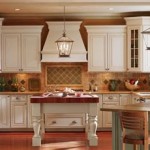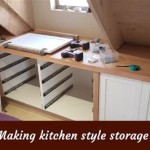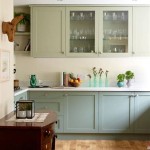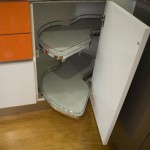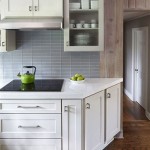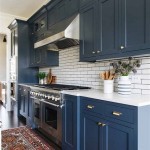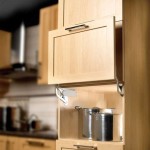Kitchen Cabinet Door Edge Trim: A Comprehensive Guide
Kitchen cabinet door edge trim plays a crucial role in both the aesthetics and durability of kitchen cabinetry. It acts as a protective barrier against wear and tear, while simultaneously contributing to the overall design and style of the kitchen. The selection of appropriate edge trim involves considering factors such as material, profile, installation method, and the desired aesthetic outcome. This article provides a comprehensive overview of kitchen cabinet door edge trim, encompassing its purpose, types, installation considerations, and maintenance.
The Purpose of Kitchen Cabinet Door Edge Trim
Edge trim serves several essential functions in kitchen cabinetry. Primarily, it protects the often-vulnerable edges of cabinet doors from damage caused by impacts, moisture, and general use. Without edge trim, the core material of the door (often particleboard, MDF, or wood) is directly exposed, making it susceptible to chipping, peeling, and water damage. This is particularly critical in areas prone to moisture, such as around sinks and dishwashers. Furthermore, edge trim enhances the visual appeal of the cabinets. It can conceal the raw edges of the door material, creating a more polished and finished look. It also offers an opportunity to introduce decorative elements and complement the overall kitchen design through variations in color, profile, and material.
Consider the impact of constant opening and closing of cabinets. The edges are the first point of contact with hands, appliances, and other objects in the kitchen. Without edge trim, this constant friction and impact can lead to significant wear and tear, resulting in a prematurely aged and unattractive look. By providing a robust protective layer, edge trim effectively extends the lifespan of the cabinet doors and reduces the need for frequent repairs or replacements. The added protection from moisture also prevents swelling, warping, and delamination, all of which can compromise the structural integrity of the door.
From a design perspective, edge trim acts as a visual frame for the cabinet door. A well-chosen trim can accentuate the style of the cabinetry, whether it be contemporary, traditional, or transitional. It can also be used to create contrast or harmony with the door panel itself. For example, a dark stained wood edge trim can provide a sophisticated contrast to a light-colored painted door, while a simple, minimalist edge trim can complement a sleek, modern design. The options are virtually limitless, allowing for a high degree of customization.
Beyond protection and aesthetics, edge trim can also improve the functionality of cabinet doors. Certain types of edge trim, such as soft-close bumpers, can help to dampen the sound of closing doors and prevent slamming. This simple addition can significantly enhance the overall user experience, creating a quieter and more pleasant kitchen environment. Furthermore, edge trim can be used to conceal imperfections in the door construction or to correct minor dimensional discrepancies, ensuring a more seamless and professional finish.
Types of Kitchen Cabinet Door Edge Trim
The market offers a wide variety of edge trim options, each with its own distinct characteristics, advantages, and drawbacks. These options can be broadly categorized by material, profile, and attachment method. Understanding the nuances of each type is essential for making informed decisions and selecting the most appropriate edge trim for a particular kitchen project.
Material: * Wood: Wood edge trim is a classic and versatile option. It offers a natural look and can be stained or painted to match or complement the cabinet doors. Common wood species used for edge trim include oak, maple, cherry, and pine. Wood edge trim can be shaped into a variety of profiles and provides excellent durability. However, it is susceptible to moisture damage if not properly sealed and maintained. * PVC: Polyvinyl chloride (PVC) edge trim is a synthetic alternative that is highly resistant to moisture and impact. It is available in a wide range of colors and finishes, making it easy to match existing cabinet styles. PVC edge trim is also relatively inexpensive and easy to install. However, it may not have the same natural aesthetic appeal as wood. * Metal: Metal edge trim, typically made of aluminum or stainless steel, offers a sleek and modern look. It is highly durable and resistant to scratches and dents. Metal edge trim is often used in contemporary kitchens and commercial settings. However, it can be more expensive than other options and may require specialized installation techniques. * Melamine: Melamine edge banding is a thin strip of melamine-impregnated paper that is applied to the edges of particleboard or MDF. It is a cost-effective option but is less durable than wood or PVC. Melamine edge banding is available in a variety of colors and patterns to match the cabinet door finish.
Profile: * Square Edge: A square edge trim provides a clean and minimalist look. It is a popular choice for contemporary kitchens. * Rounded Edge: A rounded edge trim offers a softer and more traditional aesthetic. It is also more comfortable to the touch. * Beveled Edge: A beveled edge trim adds a subtle decorative element to the cabinet doors. It can be used to create a more refined and elegant look. * Decorative Profiles: More elaborate profiles, such as ogee or cove, can be used to create a more ornate and traditional style. These profiles often feature intricate details and require specialized machinery to produce.
Attachment Method: * Iron-on: Iron-on edge banding is a convenient and easy-to-install option. It is typically used for melamine edge banding and is applied using a household iron. * Self-adhesive: Self-adhesive edge trim features a pre-applied adhesive backing. It is a simple and quick option for small projects. * Glue-on: Glue-on edge trim requires the application of adhesive before installation. It provides a stronger and more durable bond than iron-on or self-adhesive options. * Nailed or Screwed: For wood edge trim, nailing or screwing is a common attachment method. This method provides a secure and long-lasting bond but requires more skill and precision to execute properly.
Installation and Maintenance Considerations
Proper installation is crucial for ensuring the longevity and performance of kitchen cabinet door edge trim. The specific installation techniques will vary depending on the type of trim and the material of the cabinet door. However, some general guidelines apply to all installations.
Preparation: The first step in any installation is to prepare the surface of the cabinet door. This involves cleaning the edges to remove any dirt, dust, or grease. If the edges are uneven or damaged, they should be sanded smooth before applying the edge trim. Accurate measurements are essential to ensure that the trim fits properly. Cut the edge trim to the exact length required, using a miter saw or utility knife for precise cuts. For wood trim, consider applying a primer to the edges of the door before installing the trim. This will help to improve adhesion and prevent the wood from absorbing moisture.
Application: The application method will depend on the type of edge trim being used. For iron-on edge banding, carefully position the banding on the edge of the door and apply heat using a household iron. Use a roller or block of wood to press the banding firmly into place. For self-adhesive edge trim, peel off the backing and carefully align the trim with the edge of the door. Press firmly to ensure a strong bond. For glue-on edge trim, apply a thin layer of adhesive to both the edge of the door and the back of the trim. Allow the adhesive to tack up slightly before pressing the trim into place. For wood edge trim, use small nails or screws to secure the trim to the door. Be careful not to split the wood when driving in the fasteners. After installation, trim any excess material using a utility knife or edge trimmer. Sand the edges of the trim to create a smooth and seamless transition.
Maintenance: Regular maintenance is essential for keeping kitchen cabinet door edge trim in good condition. Clean the trim regularly with a mild soap and water solution. Avoid using harsh chemicals or abrasive cleaners, as these can damage the finish. Inspect the trim periodically for signs of damage, such as cracks, chips, or peeling. Repair any damage promptly to prevent further deterioration. For wood edge trim, consider applying a coat of sealant or varnish every few years to protect the wood from moisture. For PVC edge trim, clean with a specialized PVC cleaner to maintain its color and shine. Tighten any loose screws or nails on wood trim to ensure a secure fit. Replace damaged or worn-out edge trim as needed to maintain the appearance and functionality of the cabinets.
Choosing and installing kitchen cabinet door edge trim are important considerations for any kitchen renovation or remodeling project. By understanding the purpose, types, installation considerations, and maintenance requirements of edge trim, it is possible to select the most appropriate option for a particular kitchen and ensure its long-lasting beauty and functionality. A well-chosen edge trim can significantly enhance the appearance of the cabinets, protect them from damage, and contribute to the overall value of the kitchen.

Aluminum Edge Banding For Wood Doors

Aluminum Edge Banding Quality Kitchen Cabinet Doors Since 2005 Moldings And Trim Glass

10 Types Of Kitchen Cabinet Molding For Your Home

Aluminum Edge Banding For Wood Doors

Veneer Strip Corner Edging Kitchen Cabinet Door Trim China Abs Edge Banding Pvc Made In Com

From Drab To Fab Adding Trim Cabinets

How Can I Redo My Rounded Edge Flat Cabinet In Style Cabinets Shaker Doors

Aluminum Cabinet Door Trim Glass Doors
Understanding Cabinet Door Styles Sligh Cabinets Inc

Kitchen Cabinet Door Decoration High Glossy Pvc Edge Banding

